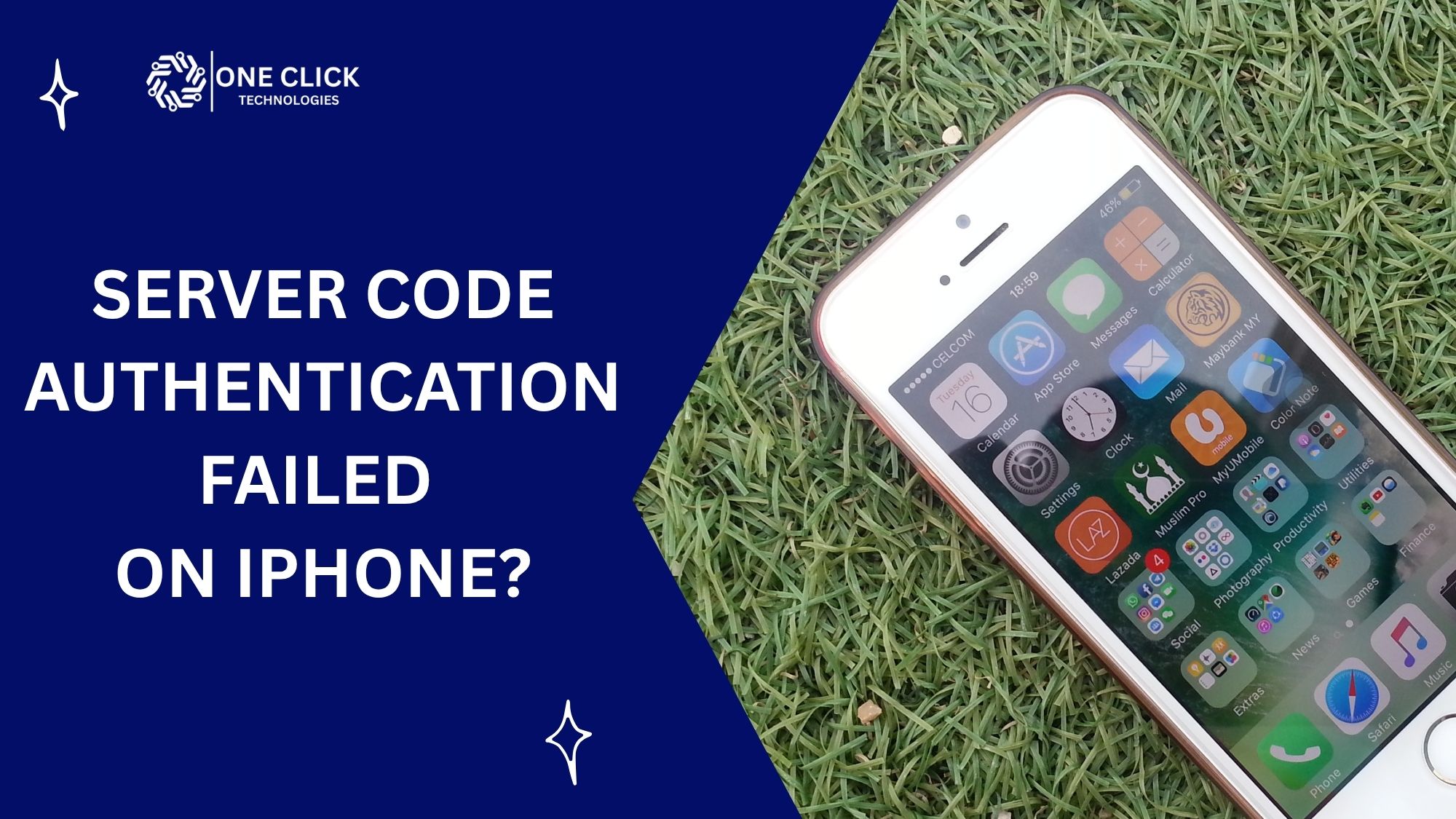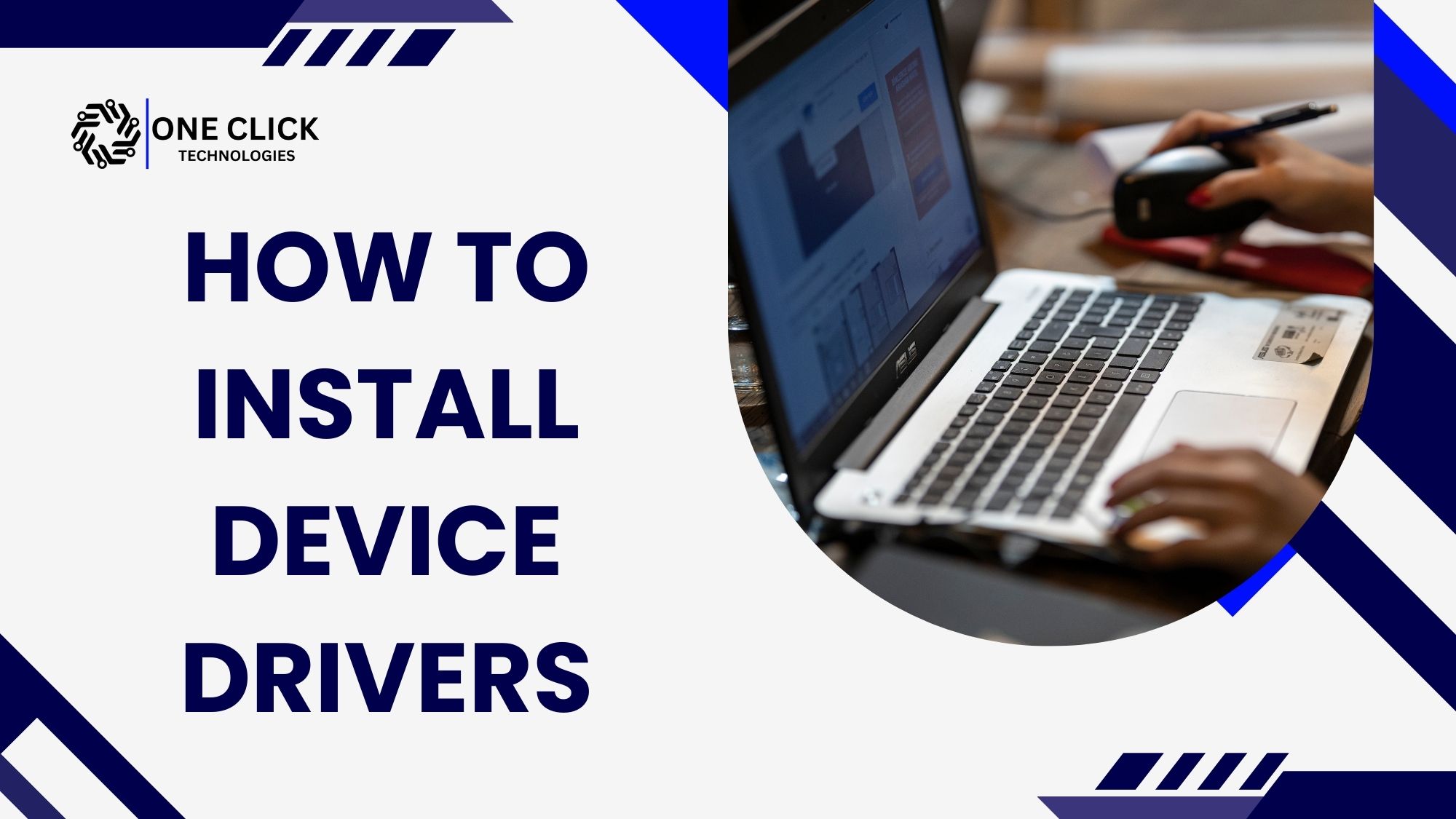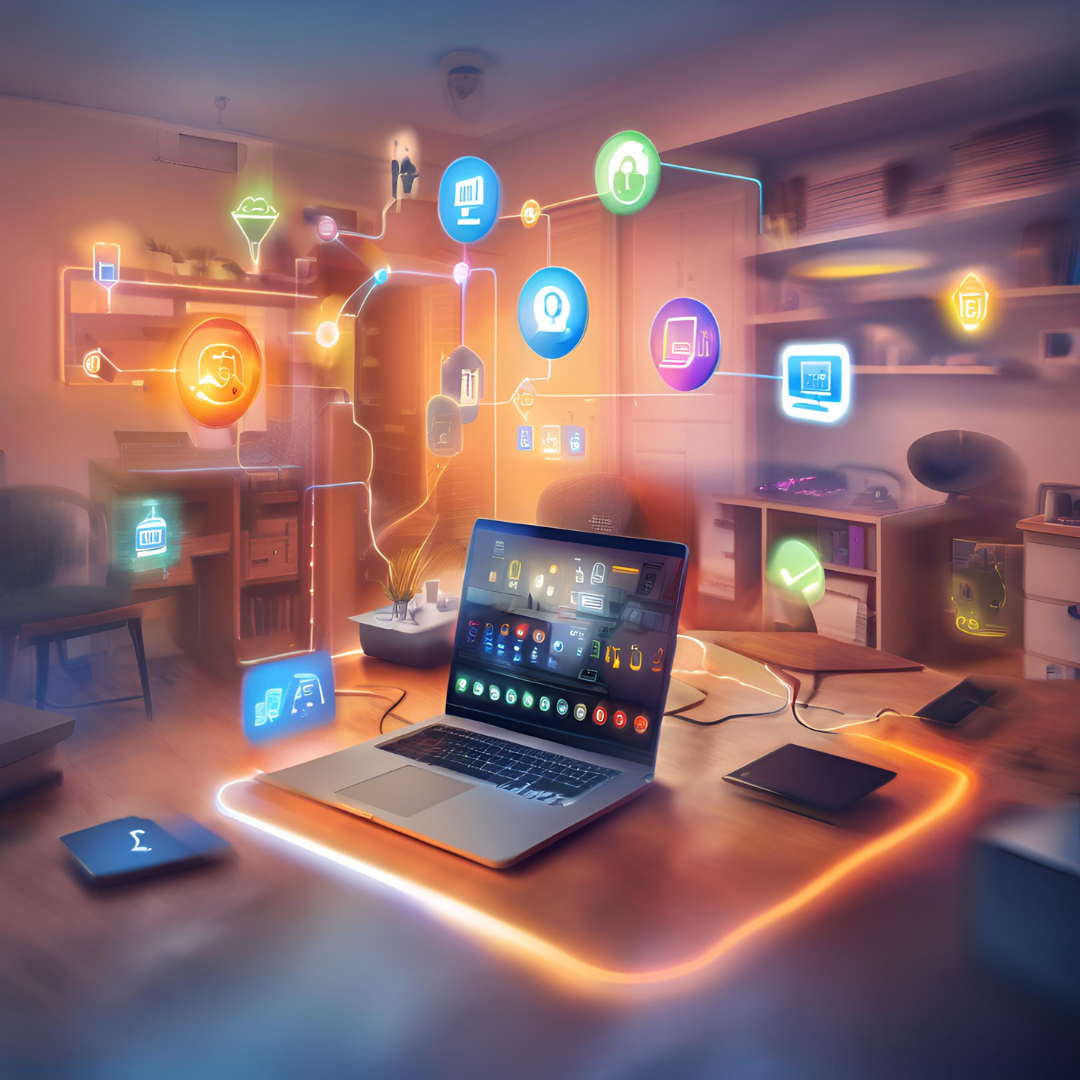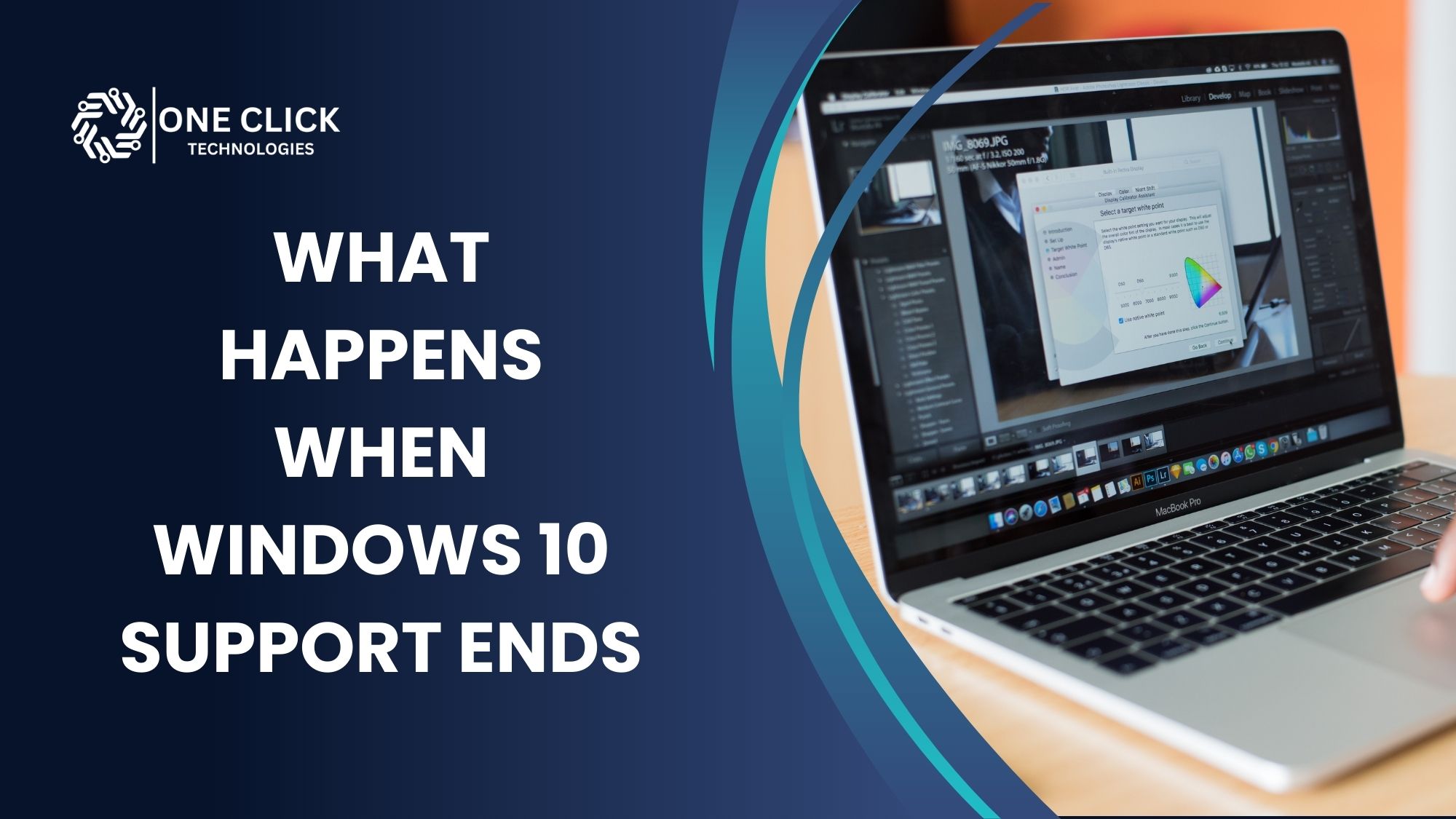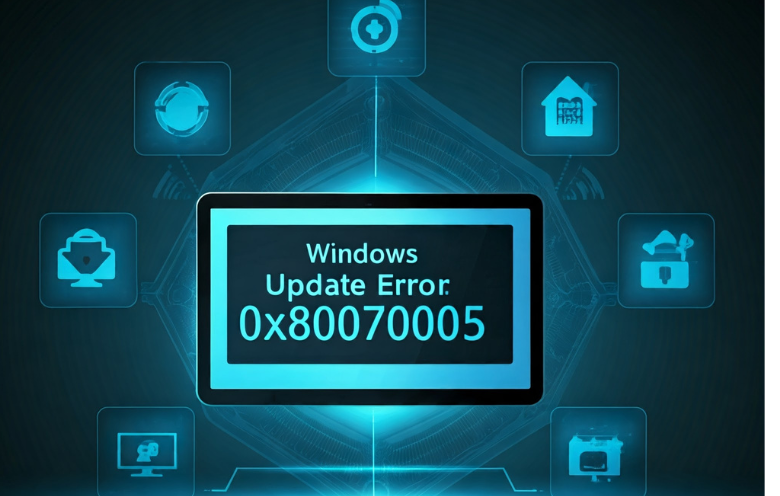Table of Contents
It’s one of those moments that stops your workday – you’re checking emails, and suddenly your screen flashes:
“Server Code Authentication Failed on iPhone.”
For many iPhone users, this confusing error shows up out of nowhere and makes it impossible to send or receive emails. Whether you use iCloud, Yahoo Mail, Outlook, or Gmail, this problem can completely halt your communication, especially if you rely on your phone for work or client updates.
If that’s happening to you, take a breath. This issue is common, and with the right steps, it’s completely fixable. The server code authentication failed iPhone error usually means your phone can’t properly verify your login credentials with your email provider’s server.
Our certified remote technicians at OneClick Technologies LLC can identify the root cause, apply safe configuration fixes, and restore your iPhone’s mail access in minutes, fast, secure, and without data loss.
What Does “Server Code Authentication Failed” Mean on iPhone?
This error occurs when your iPhone Mail app can’t verify your account’s authentication details with your email provider’s server. Essentially, the iPhone tries to authenticate — or prove your identity by checking your password and security credentials.
If those don’t match what the server expects, you’ll get the “authentication failed” message.
Common situations include:
- You changed your Apple ID password or email password, but the Mail app still uses the old one.
- Your two-factor authentication settings changed on Yahoo, Gmail, or Outlook.
- Your phone’s network settings or SSL encryption settings became corrupted.
- A recent iOS update interrupted your email configuration.
Your iPhone is trying to communicate securely with your email’s server, but something in that connection or authentication process breaks down.
Why This Happens: Common Causes Behind Authentication Failure on iPhone
Let’s look deeper into what triggers this issue.
- Invalid Credentials – The most common cause. Maybe you mistyped your password, or your Apple ID session expired. Sometimes even saved credentials become invalid after an update.
- Two-Factor Authentication Mismatch – When two-factor authentication is turned on, you may need to generate an app-specific password to log in securely from the Mail app. Without it, authentication errors occur.
- SSL or Encryption Issues – Apple devices use SSL (Secure Socket Layer) to keep email traffic private. A wrong SSL setting or an expired certificate triggers a server failed or cannot verify message.
- iOS Updates & Configuration Resets – After installing a new iOS version, some configuration or network settings can reset to defaults, creating authentication failure for mail on iPhone.
- Email Provider Settings Changed – Services like Yahoo Mail, Gmail, or Microsoft Exchange occasionally update security settings. Old configurations cause authentication issue on your iPhone.
Understanding iCloud Authentication Failures
One of the most reported versions of this problem is the iCloud authentication error.
If your iCloud account is out of sync, you might see:
- “Cannot Get Mail – The connection to the server failed.”
- “Authentication failed – Please re-enter your Apple ID password.”
Steps to Fix iCloud Authentication:
- Open Settings → Apple ID → iCloud → Mail.
- Enter your updated Apple ID password.
- If prompted, verify your account using the verification code sent to another trusted device.
- Restart your iPhone to clear cache and re-authenticate.
If your icloud email still won’t sync, you can delete and re-add your mail account. This forces a fresh connection between your device and Apple’s secure servers.
How to Fix Authentication Errors for Yahoo, Outlook, and Gmail
Every email provider has its own security policies, which means the fix can vary.
Yahoo Mail
- Open Settings → Mail → Accounts → Yahoo.
- Delete the existing account and re-add it with your Yahoo credentials.
- If you have two-factor authentication enabled, you’ll need to generate an app-specific password.
- Enable SSL encryption to secure your connection.
Outlook / Microsoft Exchange
- Check your Microsoft account on a computer to ensure it’s active.
- Under Settings → Mail → Accounts → Exchange, make sure the server name and domain match your company’s configuration.
- Re-enter your password and enable SSL.
Gmail
- Go to Gmail.com and confirm your account isn’t blocked.
- Turn on Allow less secure apps (if prompted) or create a third-party app password.
- Re-add your Gmail to the Mail app using that special password.
Each of these ensures proper authentication between your iPhone and your email provider’s server.
Step-by-Step Troubleshooting Guide for iPhone Users
Our tech support team uses a proven process to resolve this issue quickly and safely.
- Verify Credentials – Confirm that your Apple ID, email password, and two-factor verification codes are correct.
- Restart Device – Sometimes, a simple restart can fix temporary network authentication glitches.
- Update iOS Version – Outdated iOS versions cause compatibility issues. Always install the latest updates.
- Reset Network Settings – Go to Settings → General → Reset → Network Settings to clear old configurations.
- Re-Add Mail Account – Safely delete the problematic account and re-add it from scratch.
- Enable SSL – Under Mail → Accounts → Advanced, make sure SSL encryption is turned ON.
- Perform Configuration Check – Verify incoming and outgoing server ports are correct.
- Generate App-Specific Password – For two-factor accounts, use app passwords instead of standard login passwords.
When done correctly, these steps resolve almost all cases of authentication failure for mail on iPhone.
What Our Remote Technicians Do Differently
At OneClick Technologies LLC, our goal isn’t just to get your email working it’s to make sure it stays that way.
Our remote experts perform advanced server diagnostics and network configuration analysis to identify exactly why authentication failed on your device.
What we provide:
- Secure, remote login assistance (no screen control without permission).
- Verification of SSL certificates and server ports.
- Cleanup of residual invalid credentials.
- Configuration of two-factor authentication for safer login.
- Testing for connection to the server failed errors.
- Cross-device fixes (for iPhones, iPads, and even Macs).
Our process guarantees your data recovery and data safety at every step — so there’s zero risk of data loss.
Fixing Authentication Without Losing Data
One of the biggest concerns users have when fixing this error is data loss — especially important emails or iCloud files.
When handled professionally, fixing authentication failed iPhone issues never deletes emails or iCloud data. Our remote experts at OneClick Technologies LLC ensure that every adjustment, whether it’s deleting, re-adding, or re-configuring accounts — happens safely.
We also help you back up your icloud account and mail app data before changes, ensuring nothing is lost.
Two-Factor Authentication and App-Specific Passwords
If you’ve enabled two-factor authentication, you’ll often need to generate an app-specific password for your Mail app. Without it, you’ll see messages like “cannot verify server identity” or “invalid credentials.”
Here’s how to fix it:
- Log in to your email provider’s website.
- Go to Security Settings → App Passwords.
- Select “Mail on iPhone” and generate a password.
- Use this password instead of your regular one in your Mail app.
This method keeps your account secure while resolving the authentication failed problem.
Adjusting Security and Network Settings
Sometimes the fix is as simple as checking your network configuration.
- Make sure your iPhone is connected to a stable Wi-Fi network.
- Avoid public Wi-Fi when entering passwords.
- Reset your network settings if you see repeated “connection to the server failed” messages.
- Ensure encryption is active this prevents data loss and strengthens your email security.
For businesses or small offices, our remote experts can check router, DNS, and firewall rules to ensure no server authentication interruptions occur again.
Why You Should Avoid Third-Party Unlockers
When searching for quick fixes, you may come across third-party “unlocker” apps that claim to remove Apple ID or “unlock iPhone 14.” These can cause irreversible harm.
Risks include:
- Loss of your icloud account or email data.
- Permanent authenticationfailed loops.
- Invalid credentials stored permanently in system files.
- Malware or security vulnerabilities compromising your device.
Instead, always rely on Apple’s verified unlock processes or certified remote help like OneClick Technologies LLC.
When to Call a Professional
You’ve re-entered passwords, restarted your device, and still get the same error message it’s time for expert help.
You need a professional if:
- You can’t authenticate invalid credentials even after resetting.
- Multiple accounts (Yahoo, Gmail, iCloud) all fail simultaneously.
- You can’t configure mail app settings or connect to the server.
- You’re worried about data loss or email access at work.
An experienced remote technician can trace the authentication failure for mail directly to its source whether that’s a server, configuration, or SSL issue and resolve it in real time.
Preventing Future Authentication Errors
Once fixed, prevention is key. Follow these best practices to keep your email stable:
- Always update your iOS to the latest ios version.
- Store your passwords securely using iCloud Keychain.
- Avoid changing account details from multiple devices at once.
- Regularly review your security settings under each email provider.
- Perform a manual re-authentication every few months if prompted.
These small habits will save you from seeing another server code authentication failed iPhone alert in the future.
Final Thoughts
Email downtime can be frustrating, especially when you rely on your iPhone for work or client communication. The server code authentication failed iPhone error might sound serious, but in reality, it’s often a quick fix once the real cause is identified.
Whether it’s an iCloud authentication error, two-factor configuration, or a network setting mismatch, professional help ensures your email gets restored quickly and safely.
Get Fast, Remote iPhone Authentication Fix from OneClick Technologies LLC
At OneClick Technologies LLC, we specialize in remote Apple and iPhone tech support including server authentication repair, email setup, and data-safe troubleshooting.
Our certified technicians help home users, small businesses, and remote professionals fix their authentication errors on iPhone without visiting a store or risking their data.
✅ What We Offer:
- Fast, remote server code authentication failed iPhone resolution.
- Full support for iCloud, Yahoo Mail, Outlook, and Gmail.
- Assistance with SSL configuration, password resets, and network settings.
- Guaranteed no data loss and enhanced security after the fix.
👉 Contact OneClick Technologies LLC today for professional, secure, and quick help. Let our experts handle your iPhone authentication issue remotely, so you can get back to your emails, meetings, and business without worry.

